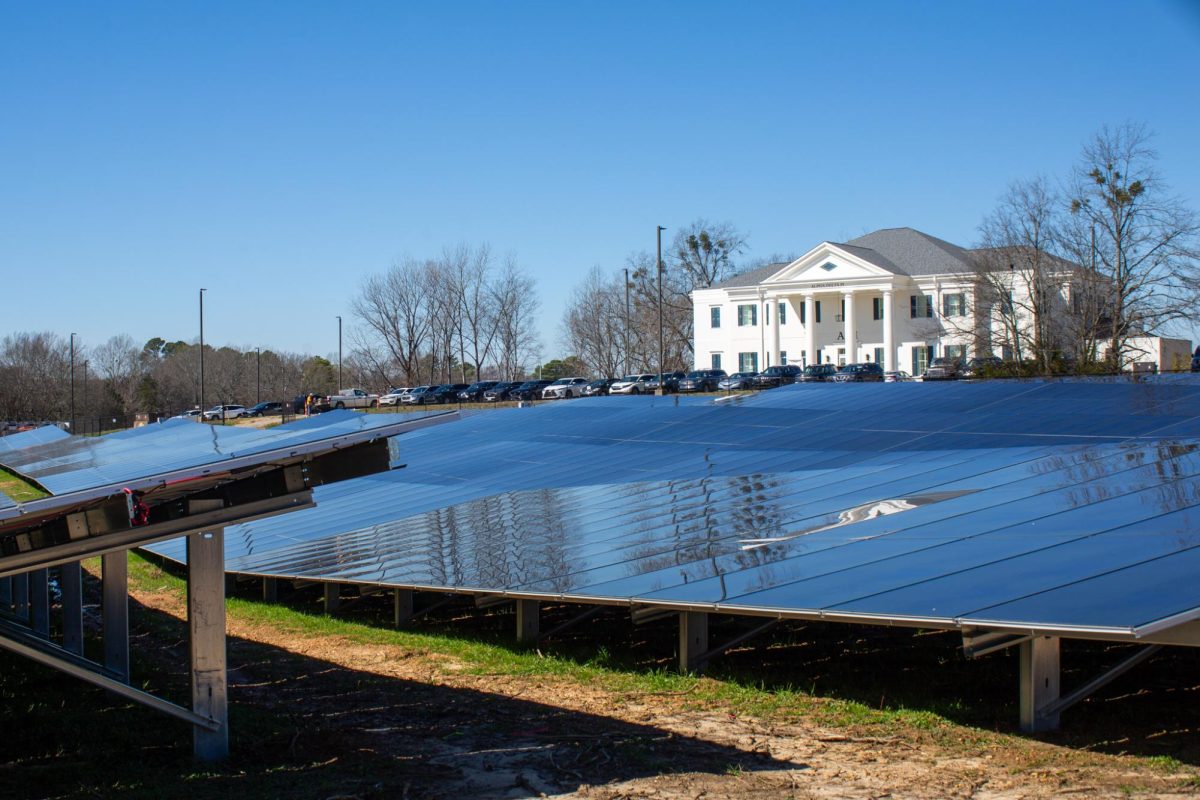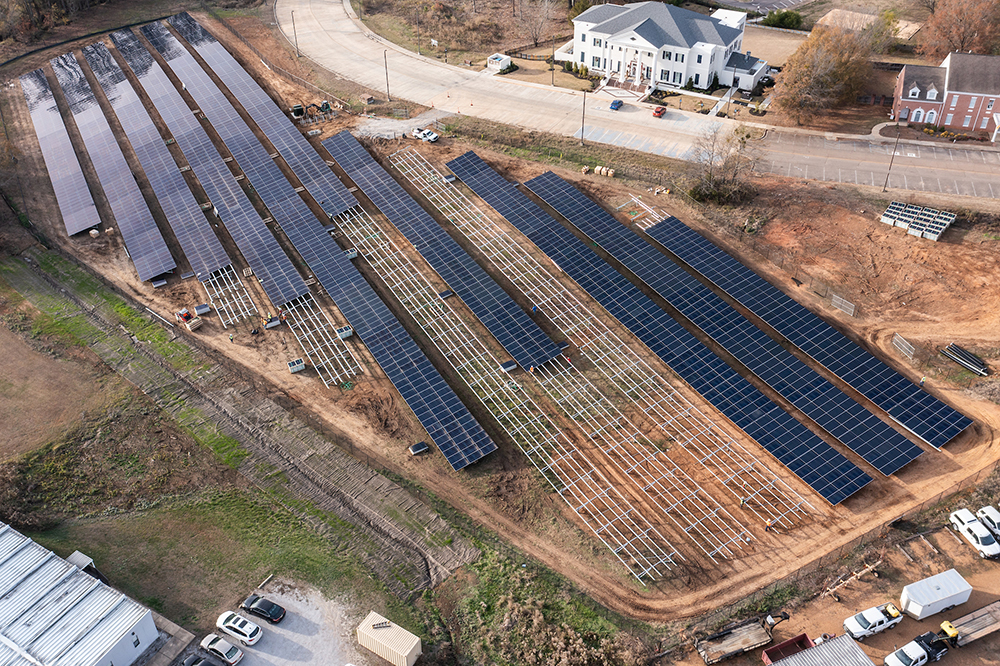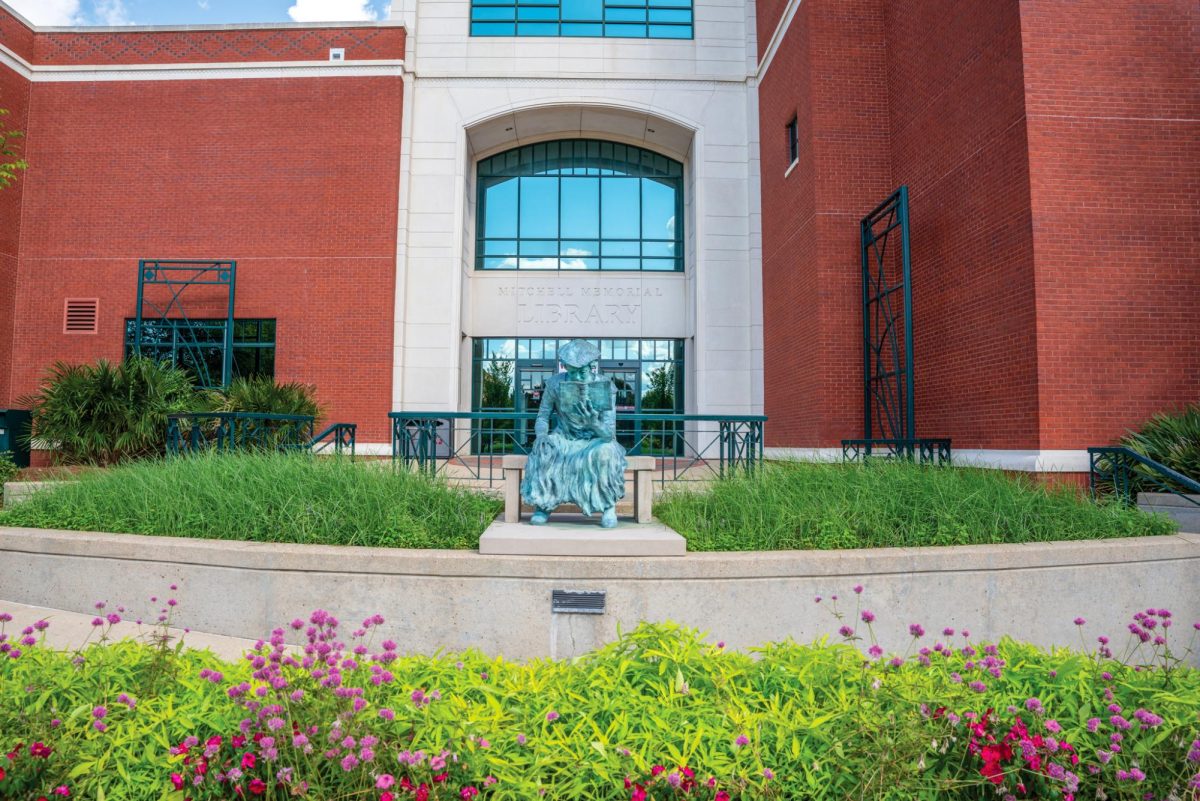Mississippi State University is achieving two significant milestones with the construction of the largest on-campus solar facility in the SEC and the nearly completed transition from fluorescent to LED lighting in all campus facilities, both of which are in MSU’s 30-year Renewable Energy Efficiency Project.
The combined changes are expected to reduce MSU’s annual carbon emissions by 7,548 metric tons and save the university 10,784,865 kilowatt energy hours per year. For reference, the average American home uses an average of 10,971 kilowatt hours per year according to the U.S. Energy Information Administration (EIA).
The university-funded 30-year Renewable Energy Project, implemented by MSU President Mark Keenum, commits MSU to efforts in reaching carbon neutrality by 2042.
The new 3,420-panel solar facility is set to provide approximately 1.65% of campus electricity starting this summer. Positioned on a field between R.L. Jones Circle and Blackjack Road, the facility costs around $2.5 million and is expected to yield around $200,000 in annual savings.
The majority of MSU’s remaining power consumption comes from Starkville Utilities. Natural gas, a non-renewable source that produces carbon emissions, accounts for 76% of Mississippi’s power generation according to the EIA.
David Wallace, an assistant clinical professor at the MSU Department of Electrical and Computer Engineering (ECE) and manager of the Paul B. Jacob High Voltage Laboratory, said the increase in renewable energy and decrease in conventional energy used is very impactful for the environment.
“By putting in the solar farm you’re reducing the amount of conventional energy generated from generation plants and going to the renewables, which makes a big difference,” Wallace said.
Executive Director of Campus Services Saunders Ramsey explained that while the energy contribution of the solar facility seems small, it is significant when you consider how much energy the campus uses, which is around 119,454,230 kWh per year.
“When you’re using as much as we are, for a four-acre site like that to produce 2% is a pretty big deal,” Ramsey said.
The nearly complete $5 million transition from fluorescent to LED lighting will also have a large impact on MSU’s carbon footprint. LED lighting uses much less energy and lasts much longer than fluorescents.
The change is expected to reduce annual energy usage on campus by well over 8 million kilowatt hours and save the university almost $700,000 annually.
Ramsey said that the great thing about the lighting upgrade is that it will begin saving MSU money on electricity immediately and will eventually pay for itself.
“You know, it is an energy win, it’s a climate win, but we’re a public institution responsible for public dollars and it’s also a financial win,” Ramsey said.
MSU will receive a $265,000 one-time rebate from Tennessee Valley Authority (TVA) for the changes.
Yong Fu is a TVA-endowed MSU professor at the ECE who operates a small energy farm of solar panels and wind turbines on the roof of Simrall Electrical & Computer Engineering Building.
Fu said that he sees potential for a variety of student learning opportunities with the new solar farm based on his experiences working with students at the Simrall facility. The facility can benefit electrical engineering students in providing them with hands-on experience, applying what they’ve learned in the classroom with solar energy at a larger scale.
“So before they graduate, they have all this knowledge that will enhance the competition in the job market,” Fu said.
The new solar facility also offers a valuable case study opportunity for students across other majors. For instance, Fu said that mechanical engineering students can focus on analyzing the materials used, and industrial engineering students can benefit from studying the optimization of the facility’s location and size. Additionally, business students can work on studying the economic aspects of the project.
Professor Wallace also mentioned the value of hands-on learning that he has seen in the high-voltage laboratory, which is the largest of its kind in the U.S.
“If you can see it, if you can touch it, I think you can learn it a lot better than just reading about it in a book,” Wallace said.
Professor Wallace said one problem with solar facilities is the use of batteries to store electricity through the night or through cloudy seasons. These batteries typically only last between five and ten years, and are made with chemicals that harm the environment.
However, the new solar facility will not have that problem. Energy generated through the facility is connected to the utility grid to be used immediately, eliminating the need for battery storage.
Planning for the solar facility began in 2019 with MSU choosing Entegrity Energy Partners as the engineering company for the project.
Entegrity Energy Partners’ state director for Mississippi, Ryan Burrage, said the company looked at many different iterations of the project in hopes of optimizing the facility and helping move MSU toward its carbon neutrality goal.
Ryan Burrage is also an alumnus from MSU and said that working on the project was very meaningful to him.
“We are just really proud to play a very small role in implementing technology in a prestigious place like Mississippi State, and as an alumni I’m incredibly proud that my university is currently the title holder of the largest on-campus solar array in the Southeastern Conference,” Burrage said.



























































































